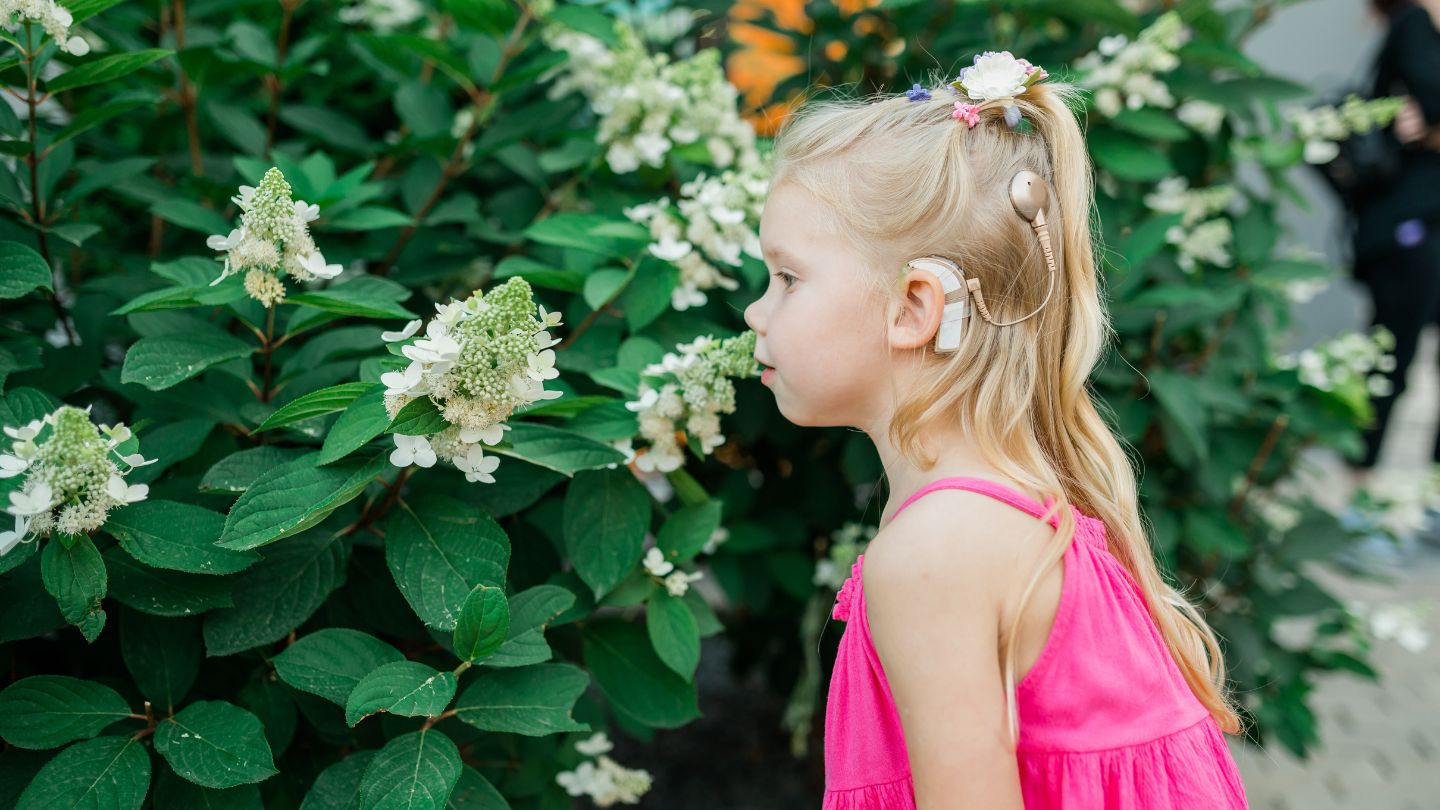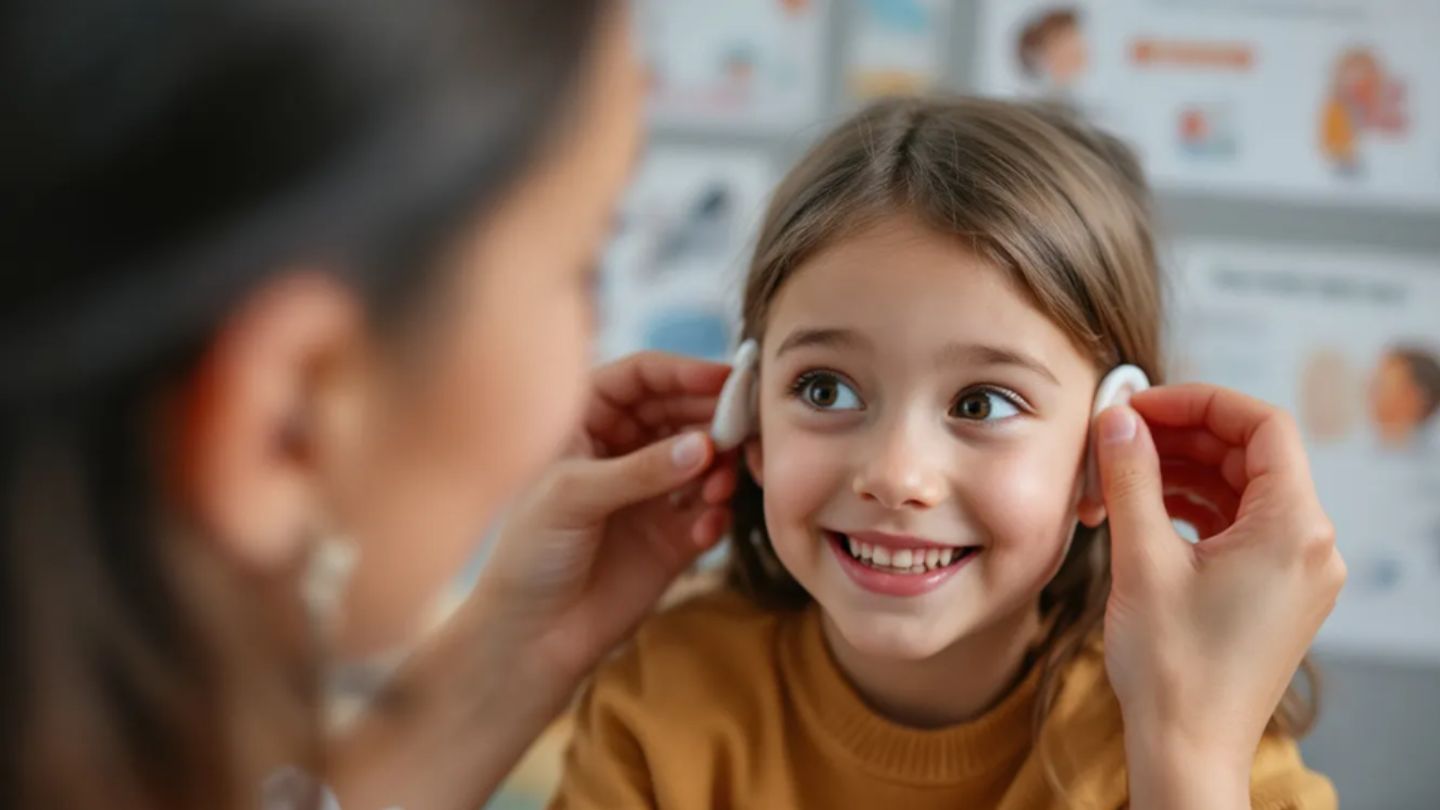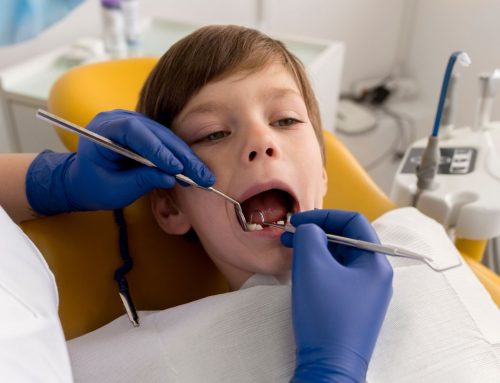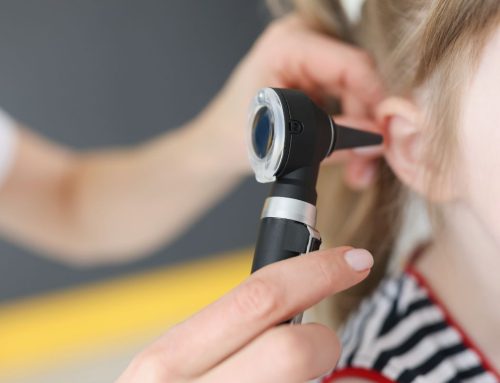Yes, children should consistently wear hearing aids. Continuous use of hearing aids is vital for their auditory development as well as language and social skills growth. This blog delves into the importance of uninterrupted wearing of hearing aids for children and offers professional guidance along with methods to maximize the advantages that children gain from using their hearing devices.
Key Takeaways
- Consistent wear time of at least 10 hours daily is crucial for children’s auditory and language development.
- Children using hearing aids regularly exhibit significant improvements in communication skills, social interactions, and emotional well-being.
- Creating a structured routine and involving caregivers can enhance hearing aid compliance and optimize developmental outcomes.
The Importance of Consistent Wear Time
Regular wearing of hearing aids is vital for the holistic growth of children. Pediatric audiologists emphasize that consistent usage contributes to establishing brain circuits critical for skills such as listening, talking, and reading. Children who consistently wear their hearing aids demonstrate significant enhancements in spoken language abilities and communication skills. Routine use promotes auditory health and fosters better developmental results. Understanding how to choose the best hearing aid for your child ensures optimal support for their unique developmental needs and growth.
Now let’s delve into why this continuous wear time is so crucial.
Enhancing Brain Development
Utilizing hearing aids is crucial for the development of brain cells, as it enables them to establish vital connections necessary for learning and growth. Pediatric audiologists emphasize the importance of wearing these devices consistently throughout waking hours to fully support speech and language advancement. Uninterrupted exposure to sound greatly enhances a child’s ability to listen, talk, and read.
Research indicates that fitting infants with hearing aids before they reach six months can lead to significantly improved linguistic skills due to early intervention establishing essential neural pathways needed for communication. Audiologists advocate that children wear their hearing aids or cochlear implants during all waking hours in order to optimize such developmental outcomes, particularly focusing on any ear equipped with a hearing aid.
For parents juggling multiple responsibilities, understanding that hearing devices are more than just tools—they serve as gateways allowing the brain access—can shift perspectives toward prioritizing their use for cognitive pathway development. Regular usage guarantees ongoing stimulation for brain cell connectivity, which bolsters overall mental growth and helps create lasting bonds among neurons. This insight into how pivotal these technological instruments are might encourage diligent application of this practice by parents who wish their child to wear such technology effectively.
The continual employment of these auditory supports transcends mere improvement in perception. It offers your child’s developing mind access to an array of sounds, including numerous words, which play a significant role in nurturing robust communicative abilities as they absorb what they hear around them while fostering integral skills tied closely to listening, conversing, and ultimately, their literacy capabilities.
Language and Communication Skills
Regular utilization of hearing aids in children is linked to notable progress in their spoken language capabilities. Studies have found that engaging with hearing devices for more than ten hours daily correlates with advanced language acquisition. This sustained wear boosts abilities essential for communication and social engagement.
Expert pediatric audiologists emphasize the role of continuous use of hearing aids in fostering both linguistic growth and social competencies. Those who maintain a regular usage pattern frequently exhibit improvements in speech precision and demonstrate greater confidence during social interactions, reflecting enhanced communicative effectiveness.
Comparisons from case studies reveal that children who adhere to consistent use of their hearing aids make substantial strides in language development compared to those who do not consistently utilize them. Audiologists point out a trend where children facing challenges with spoken language often engage with their hearing aids for fewer than three hours per day, suggesting a necessity for extending the duration they are worn. Steady application leads to improved proficiency across various activities, including listening, speaking, and reading skills.
Social and Emotional Benefits
Frequent utilization of hearing aids can bolster a child’s ability to connect with their peers. When children regularly use their hearing aids, they experience a boost in social assurance that facilitates easier and more organic participation during social interactions. The enhancement in how they relate to others plays an integral role in improving the emotional health of the child by nurturing inclusion and diminishing feelings of loneliness.
By consistently wearing their hearing aids, children are empowered socially and emotionally. Those who feel assured in their ability to communicate are inclined towards greater involvement in group activities, which results not only in improved language proficiency but also contributes to emotional equilibrium. This aspect is vital for comprehensive growth and contentment within a young individual’s life.
Recommended Daily Wear Time
It is essential to be aware of the recommended duration for wearing hearing aids every day in order to gain the most advantages. Professionals advocate that children should use their hearing aids during waking hours, aiming for a minimum of 10 hours each day. This extensive wear time throughout many waking hours is vital for fostering language development and enhancing communication abilities.
There are enhanced results linked with the continual wear of hearing aids by children. What exact recommendations exist regarding the length of time different age groups should wear hearing aids?
General Guidelines
Professionals recommend a minimum daily wear time of 10 hours for children using hearing aids to facilitate the development of speech and communication abilities. It is crucial for children experiencing hearing loss to consistently utilize their hearing aids or cochlear implants while awake in order to acquire and enhance skills in listening, talking, and reading. Working closely with pediatric audiologists and teachers can help ensure that children reach the recommended amount of wear time.
Evidence from real-life situations demonstrates that regular use of hearing aids by children leads to better performance in school and improved social interactions with peers. Parents typically observe an average daily usage of 10.84 hours among kids who wear hearing devices. Everyone involved in caring for or interacting with these children should understand how critical consistent wearing time is for reaping the full benefits offered by these auditory supports.
Age-Specific Recommendations
Children identified with hearing loss at birth typically receive their amplification fitting around 11 months of age. During the first year, a child’s hearing aids should be checked every 1-2 months to ensure proper fit and function. The average consistency of hearing aid use reported for infants aged 12 months is 50%.
For children aged 12-36 months, hearing aids should be checked every 3 months to monitor effectiveness. For preschoolers aged 3-5 years, 58% of those with milder losses are consistently using their hearing aids, while this number jumps to 94% for greater losses. Between the ages of 3 and 5, children’s hearing aids should be checked every 6 months.
Several factors influence hearing aid use time in children, including age, gender, maternal education, and better-ear PTA. Children of mothers with a college degree spend the most time using, while those with mothers having a high school degree or less average less than 9 hours of use. Over 90% of children received age-appropriate fitting and verification methods, ensuring effective hearing aid use.
Strategies to Achieve Optimal Wear Time
Achieving optimal wear time for hearing aids can be challenging but crucial for development. Establishing a consistent daily routine helps children understand when they should integrate hearing aid use into their everyday lives.
Common challenges affecting consistent hearing aid use include temper tantrums, illness, or fatigue. Monitoring parental reports and data logging can help address these barriers.
Creating a Routine
Establishing a routine that associates hearing aid usage with certain everyday tasks, such as dressing up, can foster consistent wear and assist in making hearing aids a staple of daily existence.
Incorporating the use of hearing aids into regular morning and evening habits ensures it becomes an ordinary aspect of daily routines, akin to tooth brushing. Maintaining this regularity enhances the duration of time hearing aids are worn and positively affects developmental results.
Involving Caregivers and Educators
The involvement of caregivers is crucial in encouraging the continuous use of hearing aids. By working together with educators and caregivers, there is a strengthened commitment to ensure that children consistently wear their hearing aids.
It’s essential for all parties involved in the child’s care to recognize the significance of regular hearing aid usage. Establishing an environment of support requires ongoing dialogue among your team, audiologists, and teachers to track advancements and tackle any challenges that arise.
Overcoming Common Challenges
During particular developmental stages, children might show resistance to wearing hearing aids. This situation calls for parents to demonstrate patience and flexibility. To encourage regular use when a child wears hearing aids, it’s helpful to incrementally extend the period they wear them and offer incentives such as treats or little toys.
Introducing young ones who wear hearing devices to other kids who also utilize them can make the experience seem more typical and lessen feelings of being different. It’s important for daily routines to include checking that batteries are fresh and that the devices are correctly fitted. Changing earwax guards or filters every month is crucial in maintaining clear sound quality.
Successfully navigating these hurdles often involves employing an assortment of specific strategies tailored for each situation. With continued support and determination from their parents, children can cultivate a favorable view about using their hearing aids regularly.
Monitoring and Maintenance
Regular monitoring and maintenance of hearing aids ensure their effectiveness. Parents often overestimate wear time, which audiologists measure using a HiPro box and software when a patient wears their hearing aids.
If hearing aids are lost or damaged, contact a pediatric audiologist for repairs or loaners. Whistling noises may indicate a poor fit, which is often resolved by adjusting the device.
Daily Checks
Parents should check their child’s hearing aids every morning and throughout the day if issues are suspected. Frequent checks are crucial for young children to identify changes in hearing status or potential issues. Verification measures determine if settings need adjustment or repair.
The fit of ear molds significantly impacts the sound quality of hearing aids. Ear molds for a child’s ears aged 3 to 5 years should be replaced every 6 months.
Parents can rely on pediatric audiologists, speech-language pathologists, and teachers for support in managing hearing aids.
Professional Adjustments
Every six months, it’s important that children who use hearing aids have them checked and fine-tuned by an audiologist. During this evaluation, the child’s current hearing aid performance is reviewed and its advantages are discussed. Parents are given a detailed update on how the device is working as well as its settings to guarantee optimal functioning and support for their child’s auditory needs.
For these evaluations, audiologists might also carry out auditory examinations, such as hearing screenings, to observe any changes in the child’s hearing ability. Securing the proper fit for a hearing aid often entails several visits rather than just one. Appointments are typically arranged every six to eight weeks following the initial assessment of amplification needs. Regular follow-up consultations play a critical role in making necessary adjustments and confirming that the hearing aids continue to meet evolving requirements specific to each child’s situation.
Troubleshooting Tips
Should your child’s hearing aids become lost or sustain damage, get in touch with the pediatric audiologist to arrange for repairs or to acquire temporary replacements. Preparing a strategy for these occurrences helps ensure continuity of use with minimal interruption.
Employing reliable techniques can be effective when addressing routine problems. For example, consistently storing hearing aids in a designated and safe spot reduces the risk of misplacement. Performing frequent battery checks and monthly exchanges of earwax guards or filters promotes optimal audio performance by keeping the devices functioning properly.
Empowering Children with Hearing Solutions
Wearing hearing aids consistently can significantly enhance a child’s ability to communicate, learn, and engage with the world. While there might be instances where short breaks are appropriate, a consistent approach ensures optimal development and integration into everyday activities. The decision should always be guided by the child’s specific needs and the guidance of their healthcare provider.
At Pediatric Ear, Nose, and Throat of Atlanta, P.C., we specialize in providing advanced care for pediatric hearing aids and addressing hearing loss for kids in Atlanta. Our team is committed to ensuring your child receives personalized solutions tailored to their needs in a supportive and compassionate environment. If you’re ready to explore the best options for your child, we’re here to help guide you every step of the way. Schedule an appointment with us today to take the next step in your child’s hearing health.
Frequently Asked Questions
How many hours of wear time are recommended for children using hearing aids?
Children should wear hearing aids for at least 10 hours daily to promote effective language development and communication skills.
How often should my child’s hearing aids be checked by an audiologist?
It is important to have your child’s hearing aids checked by an audiologist every six months to ensure proper functioning and make necessary adjustments. Regular check-ups are essential for optimal auditory health and development.
What are some strategies to encourage my child to wear their hearing aids consistently?
Motivation for your child to consistently use their hearing aids can be fostered through the creation of a regular daily pattern, with the concerted support and participation from both caregivers and teachers. Implementing a system of rewards may serve as an incentive for your child to embrace this beneficial practice.
What should I do if my child’s hearing aids are lost or damaged?
If your child’s hearing aids are lost or damaged, contact your pediatric audiologist for assistance with repairs or to obtain a loaner set. Taking swift action will ensure that your child continues to receive proper auditory support.











